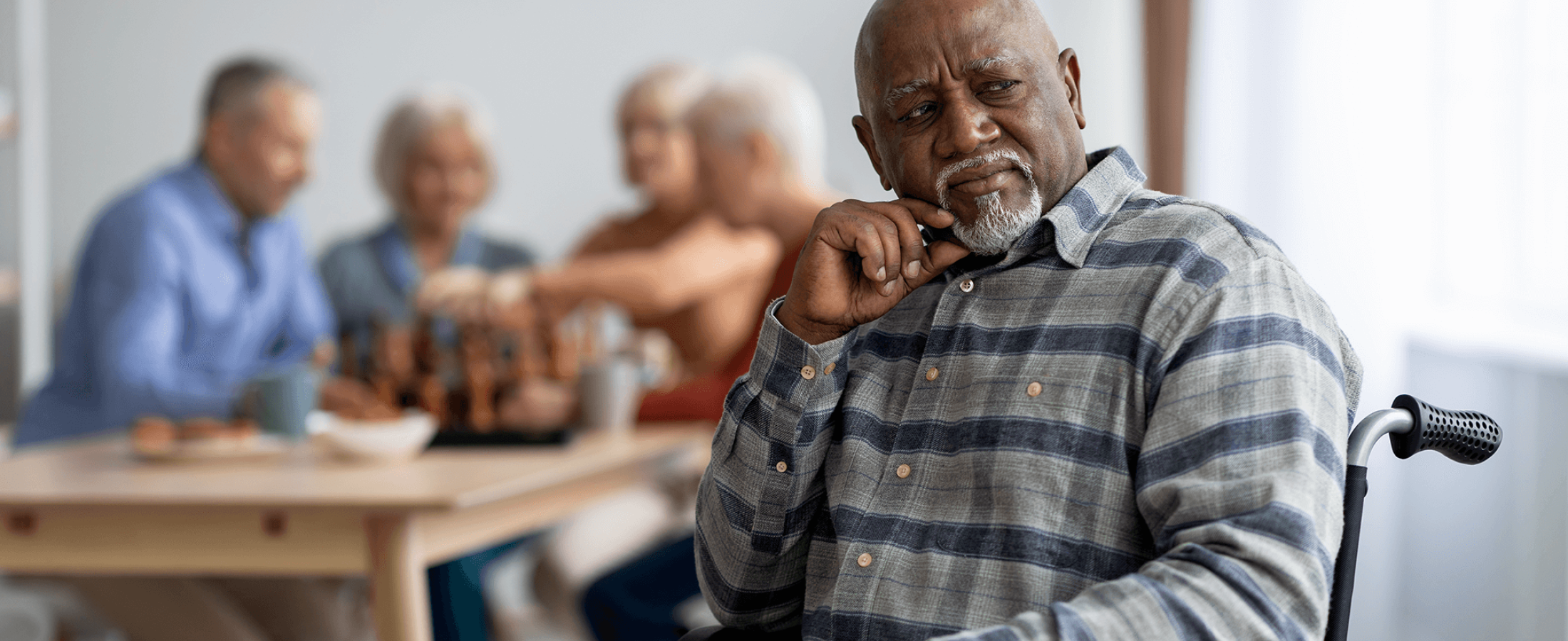
Elder abuse safety tips
Preparing a safety plan for older adults who may be abused by or afraid of their spouse/partner, adult child, grandchildren, nieces, or nephews or other family members can help plan for how you will try to manage potentially dangerous situations. Choose only the suggestions listed below that make sense for your circumstances.
What safety plans can I make to help protect myself?
If you are living with a family member who is hurtful it is important to make plans to protect yourself even if you don’t think you will need to use them. Safety plans may include:
- Ask a neighbor to call the police if they hear a disturbance coming from your home.
- Devise a code word or phrase with your neighbors, for example:
- Calling your neighbor and saying, “I need sugar” could be a signal that you are in trouble. Upon hearing this, the neighbor will know to call the police.
- Plan where you will go and what you will take with you if you must leave your house or apartment in an emergency. Think about where you will stay and how you will get there. Also, think about how you will have your mail and phone forwarded to a new address.
- Be ready to leave in a hurry if something dangerous happens. Visualize how you would get out of your home safely and quickly, and practice that escape route. Identify the best doors, windows, elevator, or stairwell and familiarize yourself with this route. If something dangerous happens, you will be ready.
- Have a packed bag ready with any essentials (see the checklist below). Keep the bag hidden and in a handy place so that you will be able to leave quickly. Consider leaving the bag at a neighbor or a friend’s if the person abusing you routinely searches your home.
If you aren’t living with the family member who is hurtful it is also important to make plans to protect yourself even if you don’t think you will need to use them. Safety plans may include:
- Call your local police precinct and request that a community patrol officer come to your home to do a free home security survey.
- Change the locks on your doors if it is at all possible the hurtful family member has access to a key. Buy additional locks and safety devices to secure your windows.
- Consider installing or increasing your outside lighting.
- Discuss a safety plan with those living with you who are not abusive (this could be children, grandchildren, or other dependents), e.g., where to go and what to do if a crisis occurs.
- Inform neighbors and your landlord that the person abusing you does not live with you and that they should call the police if they see the abusive family member near your home. It is a good idea to show or give a photograph of the family member who is harmful to you to your neighbors, building superintendent, and/or landlord.
How can I plan for my safety when the danger level escalates?
There are several things you can do if you sense a situation may escalate to a dangerous level at home:
- If you sense that you may become embroiled in an argument with the abusive person, try to remain calm and if you can, try to get to a room or area that has access to an exit, but not in a bathroom (which has mostly hard surfaces), and not a kitchen (which has knives), or anywhere near objects that can be used as weapons. Try to stay in a room with a phone, a cell phone, or a lifeline button so you can call for help including 911, a friend, or a neighbor.
- If you sense a situation is escalating to a dangerous level, try to get to a phone and call 911 before the crisis occurs. If you have a Restraining Order/Order of Protection, be sure to tell the police that you have one. If you don’t have an Order of Protection or Restraining Order talk to a domestic violence counselor about obtaining one.
- If weapons are in the home, when you call for help make sure to inform law enforcement about these weapons including the kind of weapon(s) and how many weapons are in the home.
- Trust your instincts and judgment. If the situation is very dangerous, consider any action you need to take to stay safe. For example, if you have to say something to avoid physical harm, do so and deal with correcting the statement when you are no longer in danger. For example, if you say to an abusive adult child, “Okay, I’ll give you my credit card,” then wait until you are safe and cancel the credit card.
How should I use an Order of Protection or a Restraining Order?
Orders of protection/restraining orders are civil orders from the court telling a family or household member who threatened or assaulted you not to harm you again or face serious legal consequences. Make sure to follow the instructions given to you by the Court on how to use this protection. Helpful ways to use an order of protection/restraining order may include:
- Call the police if the person abusing you violates the conditions of the Restraining Order/Order of Protection.
- Make copies of your Restraining Order/Order of Protection and distribute them to your local police precinct and trusted friends and family. Keep an extra copy in a safe place in your home.
- Always keep your Restraining Order/Order of Protection with you (When you change your purse, this should be the first thing that goes into it.). If it is lost or destroyed, you can get another copy from the Court office that issued you the restraining order.
- Think of alternative ways to keep safe in case the police do not respond right away. Remember your safety plan.
- Inform family, friends, and neighbors that you have a restraining order in effect, so they understand the seriousness of the situation.
What should I consider when planning to leave an abusive situation?
The following are ways to remain safe when preparing to leave your home if you are living with a family member who is hurtful:
- Open a savings account in your own name to establish or increase your independence.
- Consider direct deposit of your paycheck or benefit check to ensure control over your money.
- Leave money, an extra set of keys, copies of important documents and extra clothes with someone you trust so you can leave quickly.
- Determine who will let you stay with them or, if necessary, lend you some money.
- Keep your community’s elder abuse program phone number close at hand and always keep some change or a telephone calling card with you for emergency phone calls.
- Consider getting a cellular phone, if possible. These phones have come down in price, as have the monthly plans. Also, there are disposable phones available that you can buy with a predetermined number of minutes, so you don’t have to buy into a monthly plan.
- Contact your local Department for the Aging to learn about eligibility for public and private benefits and services. This information can be very helpful in providing you with supportive benefits and services when relocating.
- Review your safety plan as often as possible to plan the safest way to leave the family member causing harm.
- Leaving can be the most dangerous time. The person abusing you might feel like he or she is losing control and may want to regain control by harming you. If you feel unsafe when you are preparing to leave, call 911 and request a police escort.
- If you must communicate with the person abusing you, arrange to do so in the safest way possible (e.g., by phone, mail, or in the company of another person).
What should I bring if I leave my home?
The following is a checklist of some important items to bring with you if you must leave:
- Address book
- ATM card
- Birth certificate
- Car keys
- Checkbook
- Credit cards
- Driver’s license
- Eyeglasses
- Green card/work permit/Social Security card
- Hearing aid
- House keys
- Insurance cards
- Jewelry
- Lease, rental agreement, or house deed
- Medical records
- Medications
- Money
- Mortgage payment
- Passport/Photographs
How can I plan for my safety in public places?
When out in public (for example, doing errands, at work, at social or recreational events, or doing volunteer work), it is best to:
- Decide whom you will inform of your situation. This could include your office, senior center, building security, or places where you frequently shop or eat (if possible, provide these places with a picture of the hurtful family member).
- Devise a safety plan for when you are out in public. Try to shop in different stores and diversify your schedule of activities so that your routines are not predictable. Use a variety of routes to go home. If possible, have someone escort you to your car, bus, or taxi. Think about what you would do if you encountered the hurtful family member while out. For example, stay in a busy store or on a crowded street while calling or asking someone for help.
How can I keep emotionally strong?
Have positive thoughts about yourself and be assertive with others about your needs.
- Involve yourself in meaningful activities that are a source of strength to you.
- Decide who you can talk freely and openly with, and who can give you the support you need. Seek support from social service agencies in your community.
- Plan to attend a women’s or elder abuse support group to gain support from others and learn more about yourself and the relationship.
Where to get help
National Domestic Violence Hotline provides support counseling, crisis intervention, and safety planning for victims of domestic violence and provides referrals to helping agencies in every state. The hotline operates 24 hours a day, 365 days a year. All calls are confidential. Callers can also talk anonymously. Phone: 1-800-799-7233.
The information in this article was obtained from various sources not associated with Adirondack Bank. While we believe it to be reliable and accurate, we do not warrant the accuracy or reliability of the information. Adirondack Bank is not responsible for, and does not endorse or approve, either implicitly or explicitly, the information provided or the content of any third-party sites that might be hyperlinked from this page. The information is not intended to replace manuals, instructions or information provided by a manufacturer or the advice of a qualified professional, or to affect coverage under any applicable insurance policy. These suggestions are not a complete list of every loss control measure. Adirondack Bank makes no guarantees of results from use of this information.
This resource provides brief, general information about this health care topic. It does not take the place of specific instructions you receive from your health care providers. For answers to other questions consult your physician or other health care provider.
Article adapted by CornellCARES.com and New York City’s Department for the Aging, with permission from the Wisconsin Coalition Against Domestic Violence, 307 S. Paterson Street #1, Madison, WI 53703

